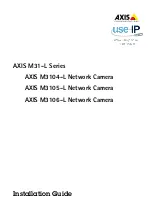
2
Configuring System Basics
2-19
Configuring IP Addresses
The Internal IP Address
Storage traffic that is to be transported through the external network
by iFCP or iSCSI must first be delivered to the iFCP/iSCSI port that
will perform the iFCP/iSCSI encapsulation. The internal IP address is
used by the iFCP/iSCSI port to receive this storage traffic from the
internal network. This traffic is then re-addressed and
re-encapsulated into an iFCP/iSCSI connection that traverses the
external network.
Because the internal IP address is local to the SAN Router, it
must
be
on the same subnet as the router inband IP address. Storage traffic
from devices directly connected to the SAN Router is delivered from
the router inband IP address to the internal IP address through
Ethernet, before it is re-encapsulated into iFCP/iSCSI for transport
through the external network. Similarly, storage traffic received by
the iFCP/iSCSI port from the external network will be
re-encapsulated using the internal IP address as the source address.
This traffic can then be addressed locally to the router inband IP
address.
Figure 2-8
on page 2-20 shows an iFCP/iSCSI port
IP address
configuration, including the iFCP/iSCSI IP address, the
internal
address
.
Summary of Contents for Eclipse 2640 SAN
Page 1: ...Eclipse 2640 SAN Router Administration and Configuration Manual P N 620 00203 020 REV A...
Page 10: ...x Eclipse 2640 SAN Router Administration and Configuration Manual Figures...
Page 18: ...xviii Eclipse 2640 SAN Router Administration and Configuration Manual...
Page 186: ...6 6 38 Eclipse 2640 SAN Router Administration and Configuration Manual Viewing Statistics...
Page 276: ...Eclipse 2640 SAN Router Administration and Configuration Manual i 4 Index...
















































